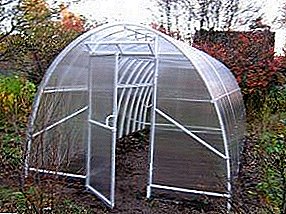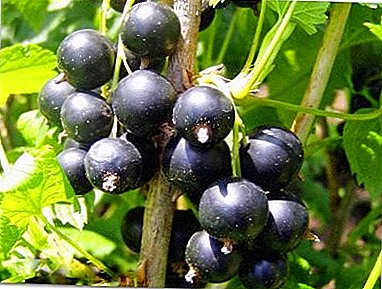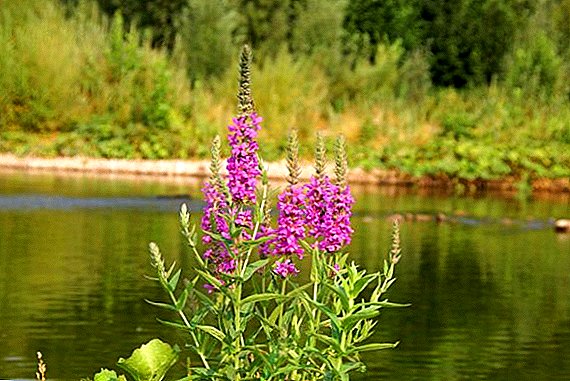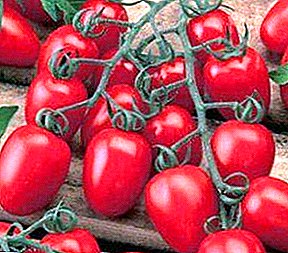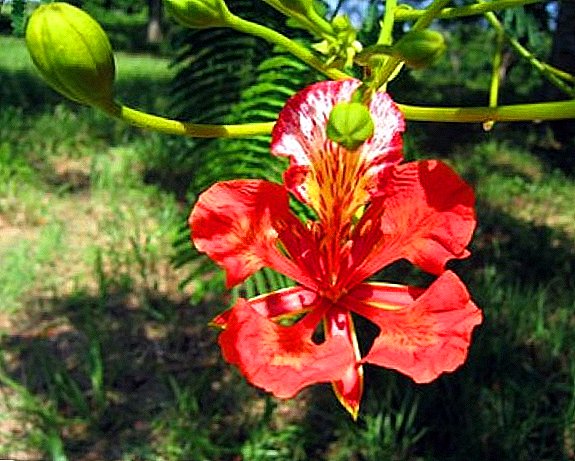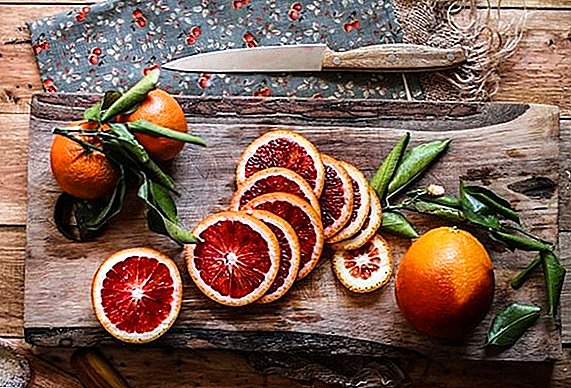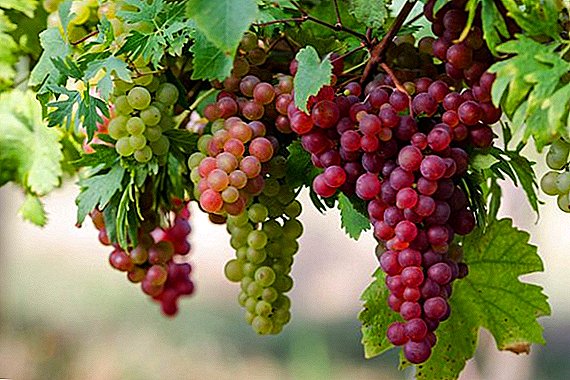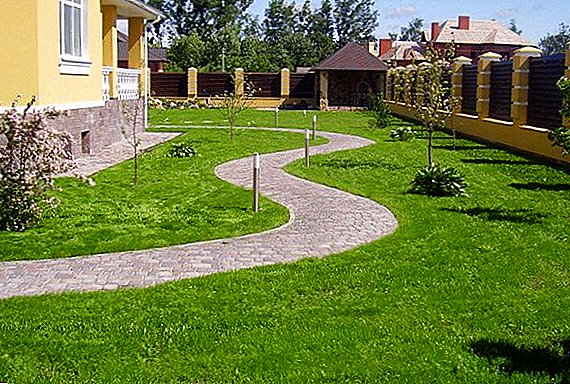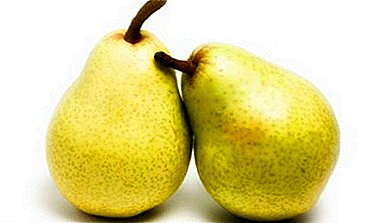
Variety of pears Duchess pear has several varieties. In production it is applied on a large scale.
It has good transportation. May persist in trees and pear storehouses. It has excellent sweet taste.
Further description of the pear variety Duchess, rules of planting and care, photos of the fruits of all varieties of this variety.
What kind of pears refers?
 It is a versatile variety with wide application. It has a delicate, juicy, flesh with a sweetish aftertaste. On a 5-point scale, tasters rated Duchess pear by 4.8 points.
It is a versatile variety with wide application. It has a delicate, juicy, flesh with a sweetish aftertaste. On a 5-point scale, tasters rated Duchess pear by 4.8 points.
It is perfectly used in medicine - is an excellent component in the manufacture of cough remedies. Juices made from pears of this variety have hypoallergenic properties.
Dushes love children and adults, give juice from it even babies. Low-calorie pears, are the basis of the diet menu. Contains a large amount of vitamins and minerals.
Duchess pear is divided into several varieties:
- Duchess Angouleme.
- Dushes Moscow wild.
- Duchess Moscow garden.
- Winter Duchess.
- Summer Duchess.
Often, beginning gardeners confuse varieties of pears and think, for example, that there is a variety Bere Duchesse. This is a profound delusion, Bere and Duchess - two completely different varieties of pears!
- Pear Duchess Angouleme is low-resistant. Widely distributed in the Caucasus and Crimea. Belongs to medium-yielding varieties. Fruiting from 70 to 150 kilograms from one tree.
During the period of fruiting can enter fairly early. Pears are very large, in weight reaching 1 kilogram. In form - dull-conical. The term of ripening on average is reached in early August.
Fruits in trees can persist for a long time - until November. Appreciated for the beauty, wonderful aroma of fruit and delicate taste.
 Wild Moscow Duchess grows to a height of no more than 20 meters.
Wild Moscow Duchess grows to a height of no more than 20 meters.It has oval, rounded, slightly leathery leaves. Flowers reach 3.5 centimeters, white in color with pale pink petals.
Flowering occurs in May. It is an excellent honey plant. Fruits ripen closer to fall.
Pears of small sizes - from 150 grams, medium sizes - up to 400 grams. From one tree remove from 100 to 250 kilograms.
The life span of Moscow Duchess is 80 years. Repeat yields - in two years. Propagated by seeds.
Pear grows Duchess Moscow in Moscow, in the Caucasus, the European part of the Russian Federation, Central Asia.
- Garden Moscow Duchess in height reaches 30 meters. Belongs to the family Rosaceae. It has white flowers with a huge number of stamens.
Large-sized pears, reaching more than 800 grams. The color is reddish with a pale yellow tint. Saccharinated fruit 16%.
With long-term storage on the bushes, the fruits do not lose taste. Widely used in dried form. Have a rich application in technological production.
- Pear Duchess Winter originated from Belgium. Widely grows in Uzbekistan, Crimea and the North Caucasus. Quite picky about climate and soil.
Fruits well on fertilized soils. Loves areas that are protected from the weather and strong winds.
- Variety of pears Duchess Summer Old English pear varieties with late-ripening fruits. This variety is self-infertile and needs pollinators.
Other names of this variety are known: Williams summer, Williams, Williams Bon-Chretien.
According to the prevalence in the Crimea, the pear Duchess Summer takes the third place after Bere Bosk and Bere Ardanpon, below you will see a photo of the fruits of this variety and a full description of characteristics.
The following varieties can also boast with beauty and taste: Fairytale, Red-sided, Krasulia, Lada and Pet Yakovleva.
Summer varieties also include: Carmen, Ilyinka, Cosmic, Limonka and Victoria.
Breeding history and breeding region
 Pear trees of a grade of Dyushes D'Angulem, Wild Moscow and Garden Moscow grow on the territory of Russia.
Pear trees of a grade of Dyushes D'Angulem, Wild Moscow and Garden Moscow grow on the territory of Russia.
They are favorite varieties of amateur gardeners. Possess fast ripening without much hassle and high yields.
Fruits are juicy, sweet with a thin skin. Widely applicable in home blanks.
Pear Duchess translated literally "Duchess" - duchesse. The variety was bred by a professional breeder in England - Wheeler. The distributor of Duchess is considered to be Williams. The first mention of the variety falls on 1796
Further description of the variety Duchess, gardeners reviews, recommendations for planting and a photo of the fruit on which you will see what this pear looks like.
Description varieties Duchess
Description of fruits and trees
- Pear Duchess Winter tree branched, crown width large in the form of a pyramid, of strong growth. Reaches great heights, but grows in time for a long time. Emerald leaves of medium size elliptical shape.
For pollination varieties are well suited: winter "Bere Ardanpon", French "Williams".
Fruits can be tied with bunches or grow one by one. By the time the branches are kept for a long time. Pear Duchess pear Winter barrel-shaped, reaching 800 gramssee further photos of this sort. Well tolerated transportation. The surface of the fruit is smooth.
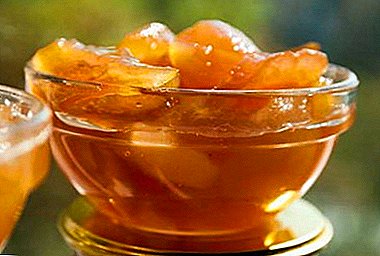 Peel with a light floral aroma, smooth, fairly dense.
Peel with a light floral aroma, smooth, fairly dense.By to color of bright amber or saffron yellow shade. On the side has a small sun blush. The flesh is white in color, melting, very juicy.
It has sweet taste with a slight sourness. Fruits are used fresh in fruit salads or processed - in the manufacture of jam, marmalade, wine. The variety is widely applicable for making dessert dishes.
- Pear Duchess Summer (Williams) description of the appearance - the fruits on the branches can hold on for a long time, they are perfectly attached to the base of the stem. Together tied 2 or 3 pieces. Fruits are medium sized. AT weight reach from 80 to 180 grams.
The shape is wide, with oblong head and rough surface. The skin of the fruit is thin, the color is light emerald. With the final maturation has lemon yellow color with a precise blurry blush.
The pulp of the fruit is granulated, with a good juicing, cream-colored. Taste wine-sweet, slightly spicy, with a taste of nutmeg. It has a good sugar accumulation, has a wonderful taste.
Pears can be eaten fresh or processed. Jams, compotes, candied fruits, candies are made from summer Dushes. Dried pears have a wonderful taste and are used in making muesli.
A photo






Specifications
After landing on rootstocks strong growth Winter Duchess at the time of fruiting enters only 7 or 8 year.
On the quince, fruit trees begin to bear fruit for 4 or 5 years after planting.
Remarkable results showed bushes that were grafted on a decorative dwarf rootstock.
 Winter Duchess can be attributed to medium maturity. Harvest removed in October after all its leaves fall on the tree.
Winter Duchess can be attributed to medium maturity. Harvest removed in October after all its leaves fall on the tree.
Ripening pears can reach up to two months - until December.
Complete reaches maturity in the first decade of October. Fruits may persist until May months of next year.
Well stored in refrigerators. Average fruit yield from 80 to 150 kilograms from one fruit tree.
Refers to cold-resistant crops. Plots of land for planting seedlings must be protected from windy weather and have good fertile soil.
Frost resistance is also different varieties: In memory of Yakovlev, Cathedral, Karataevskaya, Noyabrskaya and Nika.
The tree of the Summer Dushes is a vigorous. Good winters in harsh climates. It has a wide pyramidal shape. Crohn Duchesse densely leafy. Twigs and tree bark is smooth with a gray tint.
Curved shoots, rather thick. Have a large number of lemon lentils. The foliage is shiny, smooth.
The shape of the round-oval sharp, large size. Leaves can be folded in the shape of a “boat”.
 Leaf buds can strongly move away from the edges of the shoots. In shape, they are pointed, short.
Leaf buds can strongly move away from the edges of the shoots. In shape, they are pointed, short.
Flower buds are very sensitive to climatic extremes. Fruiting occurs at 6 or 7 years of planting.
Pear Duchess Summer belongs to the self-infertilei.e. a variety that requires additional pollinators.
The most excellent pollinators for this tree are varieties: frost-resistant "Favorite Clapp", wild or garden "Forest Beauty", "Bere Ardanpon".
The flowers of the summer Dushes are collected in friendly inflorescences of 6 or 7 pieces. Flowering tree refers to the late, in time is a long process.
Flowers can tolerate extreme temperatures and undesirable weather conditions.
The variety has good yield. From one fruit tree can collect from 230 to 250 kilograms.
Harvesting takes place in mid-August. Fruit storage on average reaches from 5 days to 1 week.
If the pears are removed from the tree in advance, the fruit can last up to 14 days. It should be noted that for long-term storage on the skin should not be the formation of yellowness - the fruit should be underripe, a little firm. In a cool pear storehouse fruits remain up to 45 days.
Winter and Summer Duchess - similarities and differences:

- Winter Duchess pear ripening followed by harvest, occurs in October. At Summer Duchess - in August.
- Winter Dushes pears are barrel-shaped, reaching 800 grams. Fruits of the Summer Dushes medium size. In weight reach from 80 to 180 grams. The shape is wide, with oblong head and rough surface.
- The Winter Duchess has a peel with a light floral aroma, smooth, rather dense. The skin of Summer Lyshes is thin, with a pleasant aroma of honey.
- In a cool pear storehouse, the fruits of both varieties are stored for up to 45 days.
- Both varieties are used in the preparation of the preservation of juices, jams, candied fruits, marmalade.
- The winter tree of Dushes is branched, with a wide crown in the form of a pyramid, of strong growth. The tree of the Summer Dushes is a vigorous. Good winters in harsh climates. It has a wide pyramidal shape.
- The landing time of the Winter and Summer Duchesse is no different. Both varieties are planted in the second decade of April.
- As a fertilizer, the mulching of the Winter and Summer Dushes will be carried out in the autumn before the temperature drops and the precipitation falls.
- Both varieties are poorly resistant to diseases. May be subject to attacks by aphids, sucker. Lesions scab minor.
- The hare of both varieties of Dushes likes to feast on. From them, the tree must be fenced off with a small fence.
Planting and care
 The best period for planting cuttings of the Winter and Summer Dushes is II decade of April.
The best period for planting cuttings of the Winter and Summer Dushes is II decade of April.
Planting should be done before budding trees.
Unacceptable excessive deepening of the plant, this leads to the death of the seedling.
When planting, the recess should be no more than one meter, width - 70 centimeters.
ATTENTION. It is forbidden to put fresh manure in the hole. It causes painful burns on the rhizomes of fruit trees.
Black earth is poured into the landing depressions when the soil is not fertilized. The land is improved by a small composition of peat compost (two or three buckets on one groove). From the resulting mixture form a cone.
Then the roots of the stalk are distributed on it. The tree will definitely need anti-girder support. A stake is driven into the ground at a sufficiently deep distance and the seedling trunk is carefully tied to it.
Garter plants must be implemented in the form of infinity or figure eight. This helps to save the plant from unwanted damage.
The main factor in the care of a sapling is mulching. It is great for protecting the earth from climate and strong temperature extremes. As a mulch fertilizer for Duchesse use weeds, high-quality humus and straw.
 Mulching carried out in the autumn before lowering the temperature drops and precipitation.
Mulching carried out in the autumn before lowering the temperature drops and precipitation.
Pruning plants must be made in the spring time.
In 1 year of landing it is necessary to shorten by 1/4 lateral ramifications over the kidneys, as well as the central stem. This position will allow the seedling to grow both in height and in the sides.
2 years after landing, the central part of the tree should be shortened by 25 centimeters. Pruning side branches produce from 5 to 8 centimeters.
Thus, the lower branches become longer than the upper ones — a truncated cone is formed.
To save Dushes from heavy winds and heavy frosts, for the winter it is necessary to shelter. The bottom of the tree is wrapped in cotton cloth and newsprint.
The best protection from cold roots is snow. Snow accumulates in large quantities around the cutting, which leads to heat exchange of the plant.
Watering trees must be made before and after spring flowering in the amount of two or three buckets for each year of life of Dushes. Also, one watering must be done in the first decade of autumn.
To feed a fruit tree in the first year of life is undesirable, since the hole has already been improved during planting. Most of the fertilizer needs to be applied in the fall. Mineral are brought annually.
Per square meter: from 20 to 30 grams of potassium chloride; from 20 to 25 grams of superphosphate; from 20 to 25 grams of saltpeter. Organic fertilizers must be applied every three years.
Per square meter: from 5 to 8 kilograms of fertilizers. Around the fruit tree dug circular pits are made into which fertilizing is made. to a depth of 15 to 20 centimeters.
Diseases and pests
 In wet cool weather Winter and Summer Duchess pears were affected by scabthat led to the loss of fruit flavor.
In wet cool weather Winter and Summer Duchess pears were affected by scabthat led to the loss of fruit flavor.
Fruits may crack, and the flesh becomes non-aromatic and tasteless.
Fruits ripening on trees may fall due to a large overweight.
Duchess is poorly resistant to diseases. May be under attack aphids, suckers. It has low drought tolerance and moderate winter hardiness.
Lesions scab minor. To combat scab, it is necessary to process in the flowering season.
The treatment is carried out with half-percent copper oxychloride infusion or one percent bordeaux hexane.
The rotten affected foliage is recommended to burn in a fire. Such leaves are considered the main source of manifestation of this disease. Around the tree the soil is treated with "Nitrafen" (0.3%).
The scabs are resistant to scab: Elegant Efimova, Otradnenskaya, Severyanka Krasnoshchekaya, Skorospelka from Michurinsk and Yanvarskaya.
Protection from the brawl must be done before budding trees on the buds.
Best fit "Oleokuprit" or "Karbofos", dissolving in 10 liters of water per 90 grams. Get rid of the larvae due to organophosphate insecticides.
 Mature trees need to be protected from beasts. Kora Dyushes hare love to feast on. From them, the tree must be fenced off with a small fence, and also the site itself is fenced off from unwanted forest guests by buildings or a fence.
Mature trees need to be protected from beasts. Kora Dyushes hare love to feast on. From them, the tree must be fenced off with a small fence, and also the site itself is fenced off from unwanted forest guests by buildings or a fence.
Conclusion. Pears varieties Duchess have a wide range of applications. Possess a vitamin complex and essential trace elements. The fruit has a delicate, juicy, flesh with a sweet aftertaste.
Trees bear fruit well. Excellent survival on small garden plots or collective farm lands. Plants are subject to various diseases. Have a rich harvest in different climates.
Watch the video about planting pear Duchess.
//youtu.be/sgisWoknf-Q


 Wild Moscow Duchess grows to a height of no more than 20 meters.
Wild Moscow Duchess grows to a height of no more than 20 meters. Peel with a light floral aroma, smooth, fairly dense.
Peel with a light floral aroma, smooth, fairly dense.